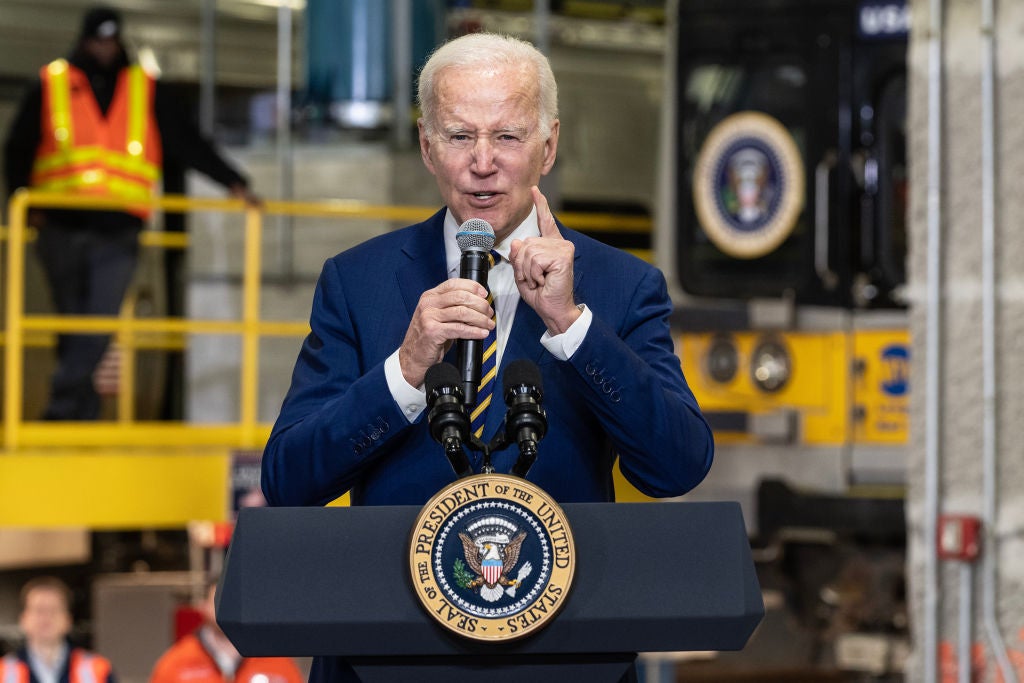November marks the two-year anniversary of Joe Biden’s 2021 Infrastructure Investment and Jobs Act (IIJA), a key feature of the President’s plan for a ‘Modern American Industrial Strategy’. The IIJA emerged as a result of the American Society of Civil Engineers giving US infrastructure an embarrassingly low score of ‘C minus’ on its quadrennial report card in March 2021, with the country’s roads, bridges, airports and water systems deemed to be in a ‘poor to mediocre condition’.
The Act promised to deliver a staggering $1.2trn dollars towards rebuilding the nation’s infrastructure and improving transportation, water, energy and broadband systems, alongside tackling climate change. Yet despite its unprecedented levels of funding, the IIJA has found itself eclipsed by its successor, the 2022 Inflation Reduction Act (IRA), whose provision of significant federal tax credits to incentivise clean energy projects had an "overnight" effect; the IIJA’s system of providing funding – mainly grants – through a range of state agencies such as the Department of Transportation or Environmental Protection Agency has proven slower and more complex.
Nonetheless, the Biden administration has hailed funding delivered under the IIJA as a win, with recent data provided by the White House revealing that the bill had successfully unlocked $261bn in infrastructure investments by September 2023, with roads, bridges and other major projects (defined as those that are "too large or complex for traditional funding programs but will deliver significant economic benefits to communities") accounting for the largest chunk of investments.
Substantial sums of funding have also gone towards the energy transition, with $12.3bn spent on clean energy and power projects and $2.6bn on electric vehicles (EVs), buses and ferries, according to the White House data.
Plans for IIJA funding for clean energy and power include $21.5bn towards developing innovative technologies like carbon capture, grid-scale energy storage and advanced nuclear reactors, according to trade association the Business Council for Sustainable Energy.
Additionally, more than $7.5bn will be spent on EV infrastructure, with an additional $43bn (excluding loans and tax incentives) going towards battery manufacturing, grid updates, retooling auto industry facilities, and retraining and rehiring existing auto workers, according to non-profit the Environmental and Energy Study Institute.
Together, the IIJA and IRA are expected to reduce CO₂-equivalent emissions by more than one billion tonnes by 2030, equivalent to the annual emissions from all US homes, according to the US Department of Energy.
Republicans cashing in on IIJA's clean energy and power funds
Unlike the IRA, which received heavy pushback from Republicans, the IIJA was more bipartisan, with 19 Republicans voting in favour of the legislation, alongside 50 Democrats and Independents. However, Joe Biden has since lambasted Republicans for “taking credit for the bill”, when they provided “little help” with seeing it through.
Energy Monitor’s analysis of White House data finds that seven states out of the top ten recipients of IIJA funding for clean energy and power voted Republican at the last national election. Although no Texas lawmakers voted for the bill, this state accounts for the second-largest share of IIJA clean energy and power investment so far.
In total, 60% of IIJA clean energy and power funding so far has gone to Republican states, which also lead the way in US wind and solar production.
This breakdown mirrors a pattern laid out in a recent Financial Times analysis, which revealed that more than 80% of investments in US clean technology through the IRA and CHIPS and Science Act has gone towards Republican states.
Biden now faces the challenge of ensuring that voters in Swing states, likely to be swayed by the surge in jobs, not the green credentials of these Acts, grasp their full benefits.
As of March this year, the largest single investments in clean-power infrastructure awarded funding under the IIJA were $1.31bn to support the demonstration of an advanced nuclear reactor in Wyoming’s Kemmerer, $1.1bn to preserve the existing Diablo Canyon (nuclear) Power Plant in Avila Beach in California; and $300m to support a battery-recycling facility in Hopkinsville, Kentucky, according to McKinsey.














